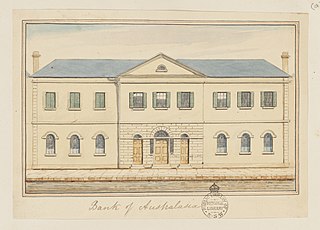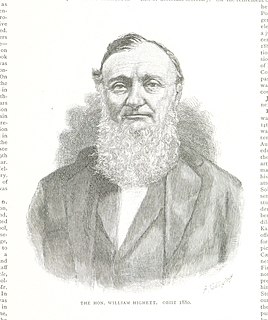
The National Bank of New Zealand Limited (NBNZ), often referred to as The National Bank, was one of New Zealand's largest banks. Throughout much of its history, the National Bank provided commercial banking services to mainly major industrial and rural as well as some personal customers.

ANZ Bank New Zealand Limited, is a New Zealand bank and financial-services group which operates as a subsidiary of Australia and New Zealand Banking Group Limited of Australia. It is the largest bank in New Zealand with approximately 30% of market share as of March 2021. Until 2012, ANZ operated in New Zealand under the legal entity ANZ National Bank Limited, which was formed as part of the 2012 merger of ANZ Banking Group Limited and the National Bank of New Zealand Limited. From 2012, the company was renamed ANZ Bank New Zealand as part of the merger of ANZ and the National Bank brands. It provides a number of financial services, including banking services, asset finance, investments and payment "solutions".

The Australia and New Zealand Banking Group Limited, commonly called ANZ, is an Australian multinational banking and financial services company headquartered in Melbourne, Australia. It is the second largest bank by assets and third largest bank by market capitalisation in Australia.

The Bank of New South Wales (BNSW), also known commonly as The Wales, was the first bank in Australia, being established in Sydney in 1817 and situated on Broadway. During the 19th century, the bank opened branches throughout Australia and New Zealand, expanding into Oceania in the 20th century. It merged with many other financial institutions, finally merging with the Commercial Bank of Australia in 1982 and being renamed to the Westpac Banking Corporation on 4 May that year under the Bank of New South Wales Act 1982.
Banking in Australia is dominated by four major banks: Commonwealth Bank of Australia, Westpac Banking Corporation, Australia and New Zealand Banking Group, and National Australia Bank. There are several smaller banks with a presence throughout the country, and a large number of other financial institutions, such as credit unions, building societies and mutual banks, which provide limited banking-type services and are described as authorised deposit-taking institutions (ADIs). Many large foreign banks have a presence, but few have a retail banking presence. The central bank is the Reserve Bank of Australia (RBA). The Australian government’s Financial Claims Scheme (FCS) guarantees deposits up to $250,000 per account-holder per ADI in the event of the ADI failing.

Sir Alexander Stuart was Premier of New South Wales from 5 January 1883 to 7 October 1885.
The 1893 banking crisis in the Australian colonies involved the collapse of a considerable number of commercial banks and building societies, and a general economic depression.

The Bank of Australasia was an Australian bank in operation from 1835 to 1951.

The Colonial Bank of Australasia was a bank operating primarily in the Australian colony and then state of Victoria from 1856 to 1918.
Westpac Banking Corporation, known simply as Westpac, is an Australian bank and financial services provider headquartered in Sydney, Australia. Established in 1817 as the Bank of New South Wales, it acquired the Commercial Bank of Australia in 1982 before being renamed shortly afterwards. It is one of Australia's "big four" banks and is Australia's first and oldest banking institution. Its name is a portmanteau of "Western" and "Pacific".
The Commercial Banking Company of Sydney Limited was a bank based in Sydney, Australia. It was established in 1834, and in 1982 merged with the National Bank of Australasia to form National Australia Bank.
Charles William Wren was an Australian banker. Wren was born in North Adelaide, South Australia and died in Italy.
The Federal Bank of Australia was established in Melbourne in 1881, and opened for business in April, 1882. Initially successful, the company expanded to New South Wales by absorbing the Sydney and Country Bank Limited in 1882. Banknotes were issued at branches in Melbourne, Sydney and Adelaide. The headquarters was in a modest building on the corner of Elizabeth and Collins Street in Melbourne.

William Highett was a banker, landowner and politician in colonial Victoria. He was also a member of the Victorian Legislative Council.

The National Bank of Australasia was a bank based in Melbourne. It was established in 1858, and in 1982 merged with the Commercial Banking Company of Sydney to form National Australia Bank.

ING Bank (Australia) Limited is a direct bank operating in Australia. It is a wholly owned subsidiary of the multinational Dutch bank, ING Group. ING Australia holds an Australian banking licence as a foreign subsidiary company.

The Rocks branch of the English, Scottish and Australian Bank is a heritage-listed former bank building and now restaurant located at 131-135 George Street in the inner city Sydney suburb of The Rocks in the City of Sydney local government area of New South Wales, Australia. It was designed by William Wardell and built during 1886. It is also known as the English Scottish & Australian Chartered Bank (former) - Amo Roma Restaurant and Vault Restaurant; the Institute of Marine Power Engineers; Five Bells; and Ox on the Rocks. The property is owned by the Sydney Harbour Foreshore Authority, an agency of the Government of New South Wales. It was added to the New South Wales State Heritage Register on 10 May 2002.
Lalla Rookh was a clipper/brig variously recorded as 184 tons and 147 tons, built in Peterhead, Aberdeenshire, Scotland in 1848. She was described as one of the "new Aberdeen clippers".
The London Chartered Bank of Australia was a English-run Australian bank which operated from 1852 to 1921.












